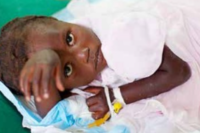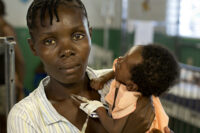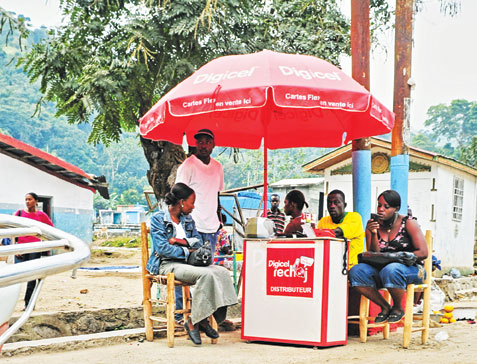 By Tim Traynor, Onsite Ground Coordinator
By Tim Traynor, Onsite Ground Coordinator
Technology in a developing country is often something that is not considered a priority. In Haiti, where the day to day struggle for the basics trumps any serious discussion concerning advancement toward an electronic highway, it would seem implausible to discuss this topic at our hospital, never mind its implementation. However, the pursuit of technology in medicine at Sacré Coeur has been one of the most significant improvements made to public health in the Northern Department over the past two years. The greatest impediment to achieving consistent progression to healthcare improvements has been the lack of reliable communications.
Ironically, there exists a robust cell phone network within the country providing a mixture of government subsidized and competitive services for many Haitians, with about a third of the population currently using these services. A typical cell phone costs $20.00 and ten minutes of talk time runs approximately 50 gourdes or $1.25 US. These rates and the costs of owning a cell phone would seem reasonable by US standards, but they represent a significant burden to those who possess them.
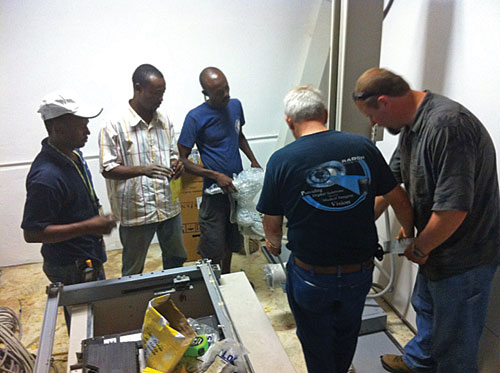 The average monthly income for the country is about $100 US so this luxury has created a substantial drain upon the population, diverting valuable capital from their daily requirement to find enough food and adequate shelter to survive. The reality however, is that cell phones provide the only method available to keep family members in touch with their expats who have emigrated to other parts of the world, and provides a vital lifeline to those who send funds back to their kinsfolk to augment their meager incomes.
The average monthly income for the country is about $100 US so this luxury has created a substantial drain upon the population, diverting valuable capital from their daily requirement to find enough food and adequate shelter to survive. The reality however, is that cell phones provide the only method available to keep family members in touch with their expats who have emigrated to other parts of the world, and provides a vital lifeline to those who send funds back to their kinsfolk to augment their meager incomes.
At Sacré Coeur, we have always been isolated from our foundation and volunteer supporters by the gulf created by a communication vacuum. Notwithstanding the above information, it has always been a significant challenge to communicate with any regularity between the US support and the hospital proper. Prior to 2010, the only method of Internet service was accomplished through a subpar satellite system that was slow, unreliable and very expensive. A typical download of just standard email would take as much as ten minutes and frequently would be interrupted by passing clouds or one of the numerous rain events that frequently occur on the island.
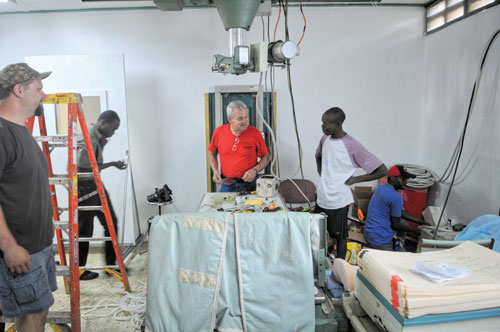 In 2011, CRUDEM began underwriting a high speed VSAT service for the hospital’s most vital communications. The intent was to find methods which allowed important transactions and discourse to take place with a modicum of reliability. Through the generosity of the Miami based ISP New Com International, we began to send and receive our electronic data with significant improvements in speed and dependability. Recently, that service was enhanced with the addition of an arrangement with Access Haiti, who is also donating its services for the hospital’s use. The Access Haiti connection has an even greater capacity to supply bandwidth and throughput that well exceeds previous data flow through its designed use of microwave technology. Once an agreement was reached with Access Haiti in the summer of 2012, a 110 foot tower was constructed upon the HIV building giving us a direct line of site connection from Mt. Viggi, located northeast of Cap Haïtien, to Milot, covering a twenty kilometer distance.
In 2011, CRUDEM began underwriting a high speed VSAT service for the hospital’s most vital communications. The intent was to find methods which allowed important transactions and discourse to take place with a modicum of reliability. Through the generosity of the Miami based ISP New Com International, we began to send and receive our electronic data with significant improvements in speed and dependability. Recently, that service was enhanced with the addition of an arrangement with Access Haiti, who is also donating its services for the hospital’s use. The Access Haiti connection has an even greater capacity to supply bandwidth and throughput that well exceeds previous data flow through its designed use of microwave technology. Once an agreement was reached with Access Haiti in the summer of 2012, a 110 foot tower was constructed upon the HIV building giving us a direct line of site connection from Mt. Viggi, located northeast of Cap Haïtien, to Milot, covering a twenty kilometer distance.
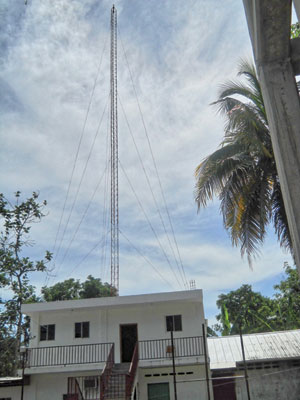 What all this means to our mission is that we can now pursue an important opportunity to consult with our US physicians and specialist directly from the hospital in real time. There are a number of initiatives currently being considered and others that are underway. By example, Dr. William Battle, of Georgetown Medical School, has begun a program to transmit echocardiography studies to the US for review and consultation in collaboration with cardiologists who visit HSC. Studies are taken by visiting specialists and sent to various hospitals to be read and then reports are returned in many cases the same day.
What all this means to our mission is that we can now pursue an important opportunity to consult with our US physicians and specialist directly from the hospital in real time. There are a number of initiatives currently being considered and others that are underway. By example, Dr. William Battle, of Georgetown Medical School, has begun a program to transmit echocardiography studies to the US for review and consultation in collaboration with cardiologists who visit HSC. Studies are taken by visiting specialists and sent to various hospitals to be read and then reports are returned in many cases the same day.
It is now possible for the doctor in Haiti to get an accurate interpretation of his client’s condition and prescribe a regiment of drugs and future care while still onsite. In the past, these reports had to be hand carried back home. Then, it may have taken several months before any physician would return to begin his patient’s lifesaving plan.
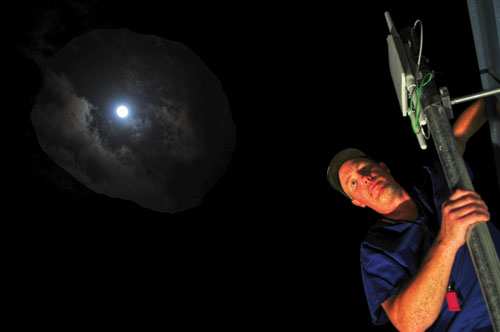 In November of 2011, Radon – West Virginia installed a newly refurbished x-ray machine with the capability to take digital images in lieu of the traditional “wet film” process. A similar arrangement of uploading these files to a US based facility to be read by qualified radiologists is producing immediate improvements in diagnostic capabilities. In addition, a number of initiatives are being planned that range from radiology services to in house patient monitoring of vital signs. Newly acquired mobile clinics will be fitted with some basic technology that will allow the hospital to communicate with these remote vehicles sending similar data directly from the vehicles, to either be uploaded to the States or managed by our Haitian staff. Such advancements provide a valuable tool in fighting all sorts of disease and in developing protocols for future surgical procedures in the region served by Sacré Coeur.
In November of 2011, Radon – West Virginia installed a newly refurbished x-ray machine with the capability to take digital images in lieu of the traditional “wet film” process. A similar arrangement of uploading these files to a US based facility to be read by qualified radiologists is producing immediate improvements in diagnostic capabilities. In addition, a number of initiatives are being planned that range from radiology services to in house patient monitoring of vital signs. Newly acquired mobile clinics will be fitted with some basic technology that will allow the hospital to communicate with these remote vehicles sending similar data directly from the vehicles, to either be uploaded to the States or managed by our Haitian staff. Such advancements provide a valuable tool in fighting all sorts of disease and in developing protocols for future surgical procedures in the region served by Sacré Coeur.
Another added benefit of the improved Internet connections is the reality of VoIP, or voice over internet protocol. This allows our American volunteers and Haitian staff to communicate within the hospital and other buildings located within the three campuses. When a doctor is needed in the Urgent Care facility, he can be summoned by telephone from the residential compound or one of the ongoing clinics, conserving precious minutes for a patient who is in having a critical event. I have been party to an intensive effort to locate someone for this purpose and can attest to the value of this improvement.
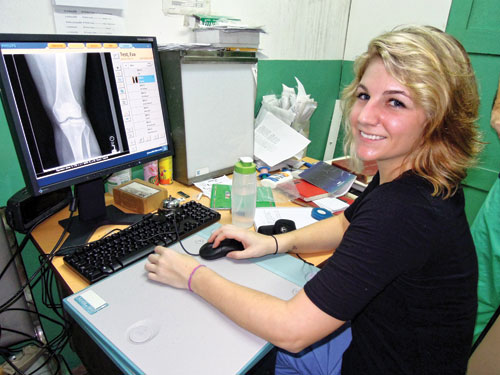 All three campuses in Milot are now connected via a Meraki Cloud System. This technology affords for wireless communication for devices like, Blackberry’s, laptops, iPhones and iPads, giving access to technical medical information similar to that which you would find in the US. We are also progressing with the installation of a PAC’s (picture archiving and imaging) system. There will be numerous stations setup throughout the hospital and clinic areas that will give access to x-rays and other vital digital imaging information on the patient. A by-product of the system will be elimination of the use of x-ray film and chemical, saving the hospital approximately $50,000 annually. All of the equipment needed is being donated and installed by Radon – West Virginia.
All three campuses in Milot are now connected via a Meraki Cloud System. This technology affords for wireless communication for devices like, Blackberry’s, laptops, iPhones and iPads, giving access to technical medical information similar to that which you would find in the US. We are also progressing with the installation of a PAC’s (picture archiving and imaging) system. There will be numerous stations setup throughout the hospital and clinic areas that will give access to x-rays and other vital digital imaging information on the patient. A by-product of the system will be elimination of the use of x-ray film and chemical, saving the hospital approximately $50,000 annually. All of the equipment needed is being donated and installed by Radon – West Virginia.
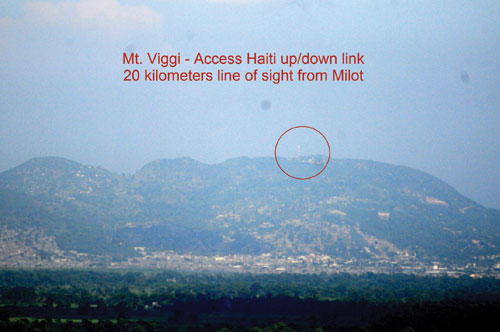 During the remainder of 2012, we intend to install an expanded fiber-optic backbone to interconnect all of the campuses with this very reliable, high speed infrastructure. This work is being undertaken by the IT department from Holy Name Medical Center in Teaneck, NJ and Rob Cadick from TriMedix. It is hoped that our deployment of a long planned night vision security system will improve upon our responsible methods to keep Sacré Coeur a safe and well managed facility. We also plan on implementing an Intranet platform for such activities as inter-hospital email, English as a second language study materials, a digital medical library, the warehouse barcode inventory program and even an entertainment module for English and French speaking staff who live at the hospital year round.
During the remainder of 2012, we intend to install an expanded fiber-optic backbone to interconnect all of the campuses with this very reliable, high speed infrastructure. This work is being undertaken by the IT department from Holy Name Medical Center in Teaneck, NJ and Rob Cadick from TriMedix. It is hoped that our deployment of a long planned night vision security system will improve upon our responsible methods to keep Sacré Coeur a safe and well managed facility. We also plan on implementing an Intranet platform for such activities as inter-hospital email, English as a second language study materials, a digital medical library, the warehouse barcode inventory program and even an entertainment module for English and French speaking staff who live at the hospital year round.





